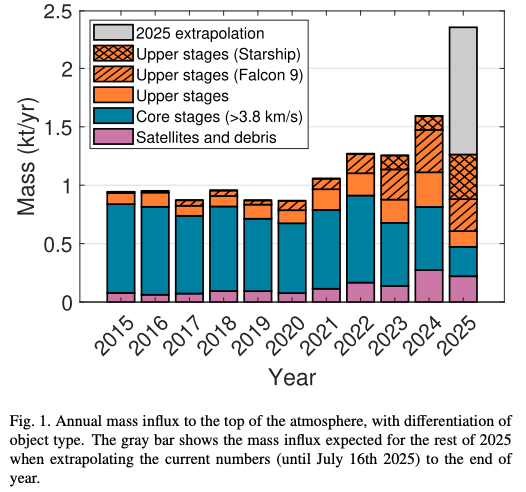“In general, from 2020 onward, a strong rise in space waste mass influx to the #atmosphere can be seen. ... This indicates a substantial risk of long-term adverse effects on the atmosphere such as #ozone depletion, radiative effects and changes in #cloud formation, if no action is taken. Research is urgently needed into the atmospheric accumulation, #chemistry, and general atmospheric effects of specific elements.”
